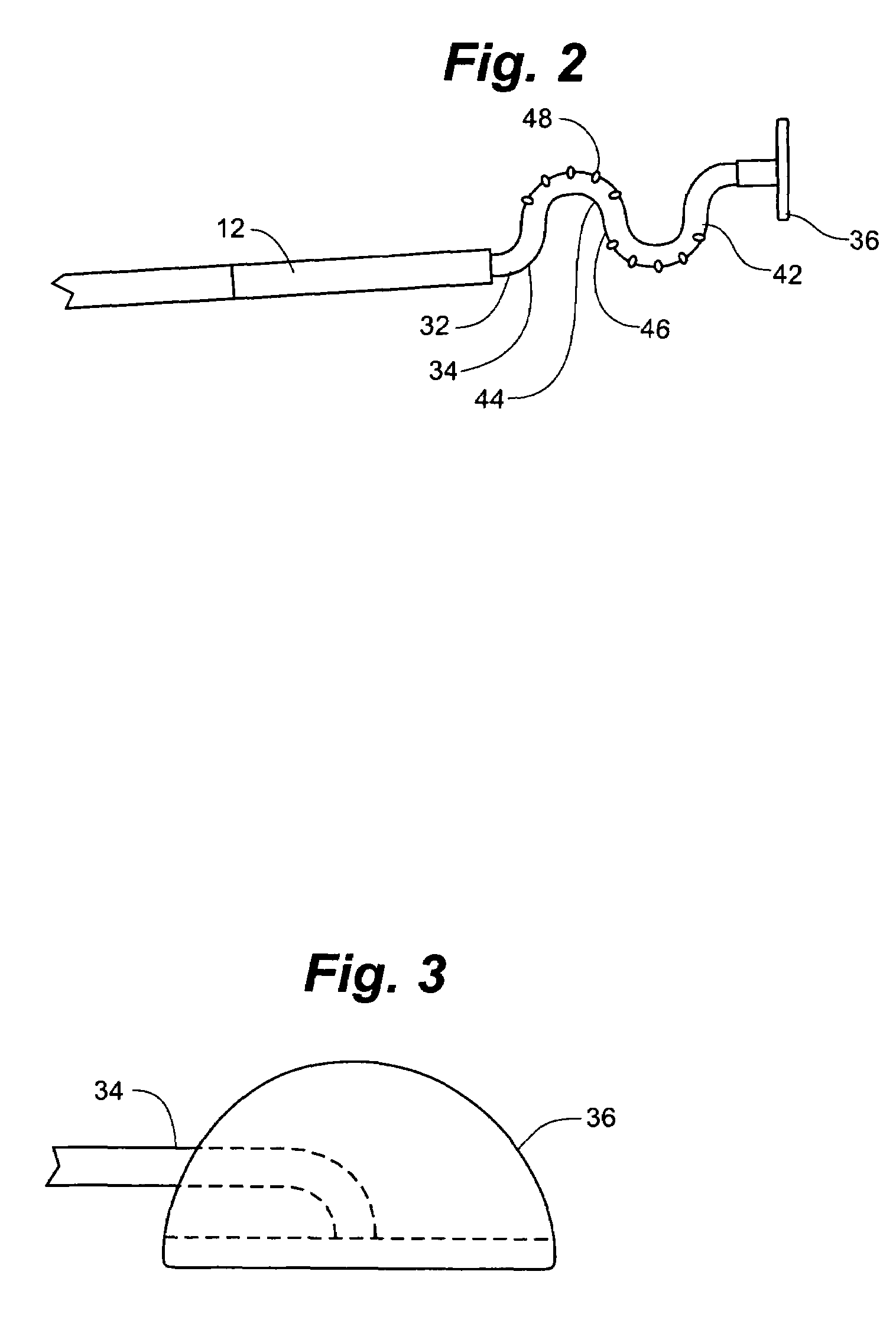Vascular access closure system
a vascular access and closure system technology, applied in the field of sealing apertures, can solve the problems of significant bleeding, severe bleeding from a blood vessel puncture in a substantially sized blood vessel, infection, etc., and achieve the effect of facilitating the placement of the vascular sealing device and facilitating the operation
- Summary
- Abstract
- Description
- Claims
- Application Information
AI Technical Summary
Benefits of technology
Problems solved by technology
Method used
Image
Examples
Embodiment Construction
[0036]As shown in FIG. 5A, the vascular access closure system 10 of the present invention is adapted for insertion into a vessel 13, typically via a conventional introducer 11. Vascular access closure system 10 generally includes a delivery tube 12 and a vascular sealing member 14 comprised of a flexible member 32 having a flange 36 that is carried by delivery tube 12. A tissue tract 21 has a distal opening that forms a vessel puncture 17 in a vessel wall 15. The vascular access closure system 10 is utilized to seal the vessel puncture 17 created in the blood vessel wall 15 during various medical procedures, such as the introduction of an introducer 11 into the vessel 13.
[0037]Referring to FIGS. 1-4, the delivery tube 12 of vascular access closure system 10 preferably is constructed of a semirigid material such as a biocompatible polymer. FIG. 1 depicts delivery tube 12 as a straight linear structure, though delivery tube 12 can be made in any curved or other irregular shape as need...
PUM
 Login to View More
Login to View More Abstract
Description
Claims
Application Information
 Login to View More
Login to View More - R&D
- Intellectual Property
- Life Sciences
- Materials
- Tech Scout
- Unparalleled Data Quality
- Higher Quality Content
- 60% Fewer Hallucinations
Browse by: Latest US Patents, China's latest patents, Technical Efficacy Thesaurus, Application Domain, Technology Topic, Popular Technical Reports.
© 2025 PatSnap. All rights reserved.Legal|Privacy policy|Modern Slavery Act Transparency Statement|Sitemap|About US| Contact US: help@patsnap.com



